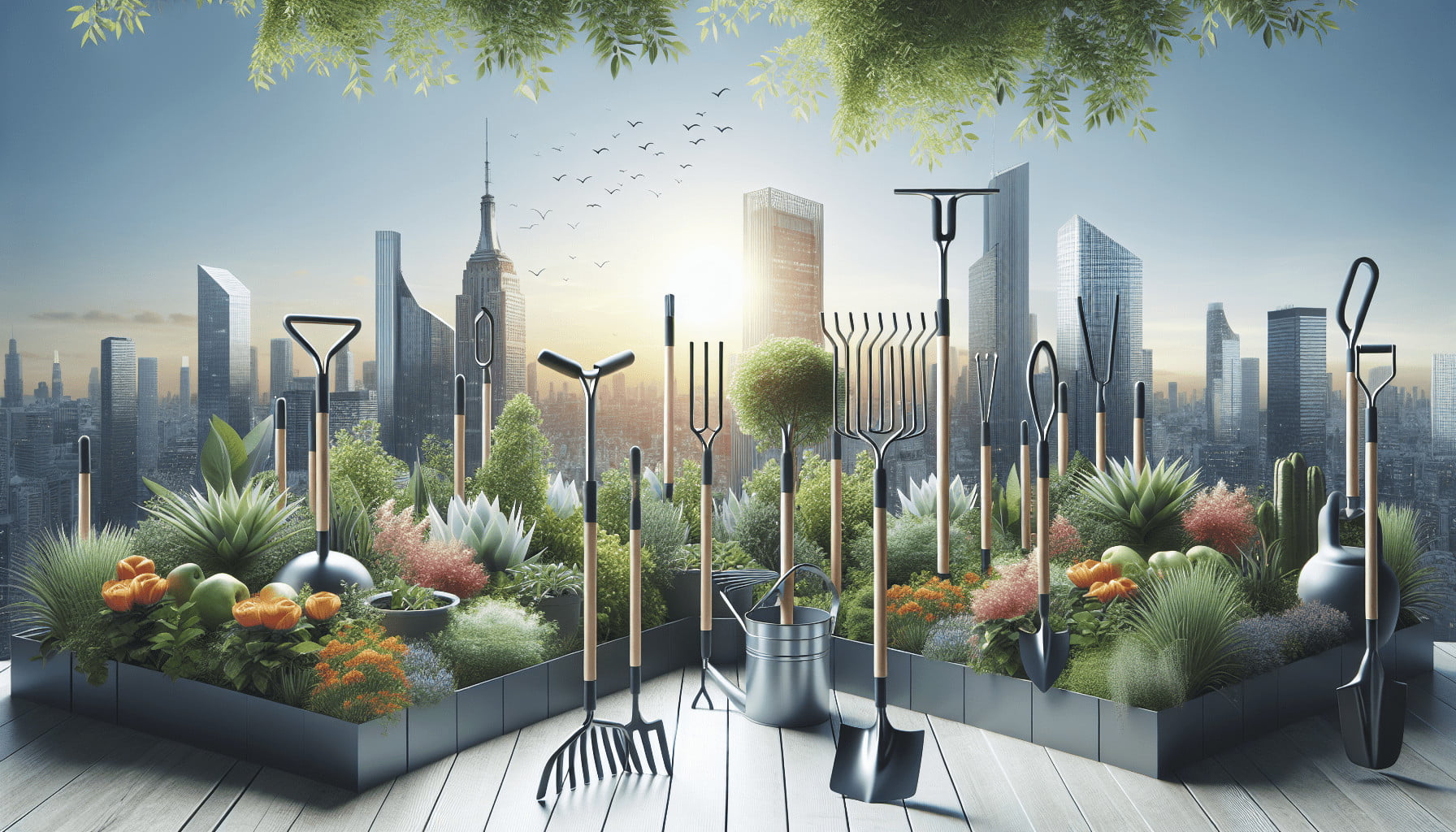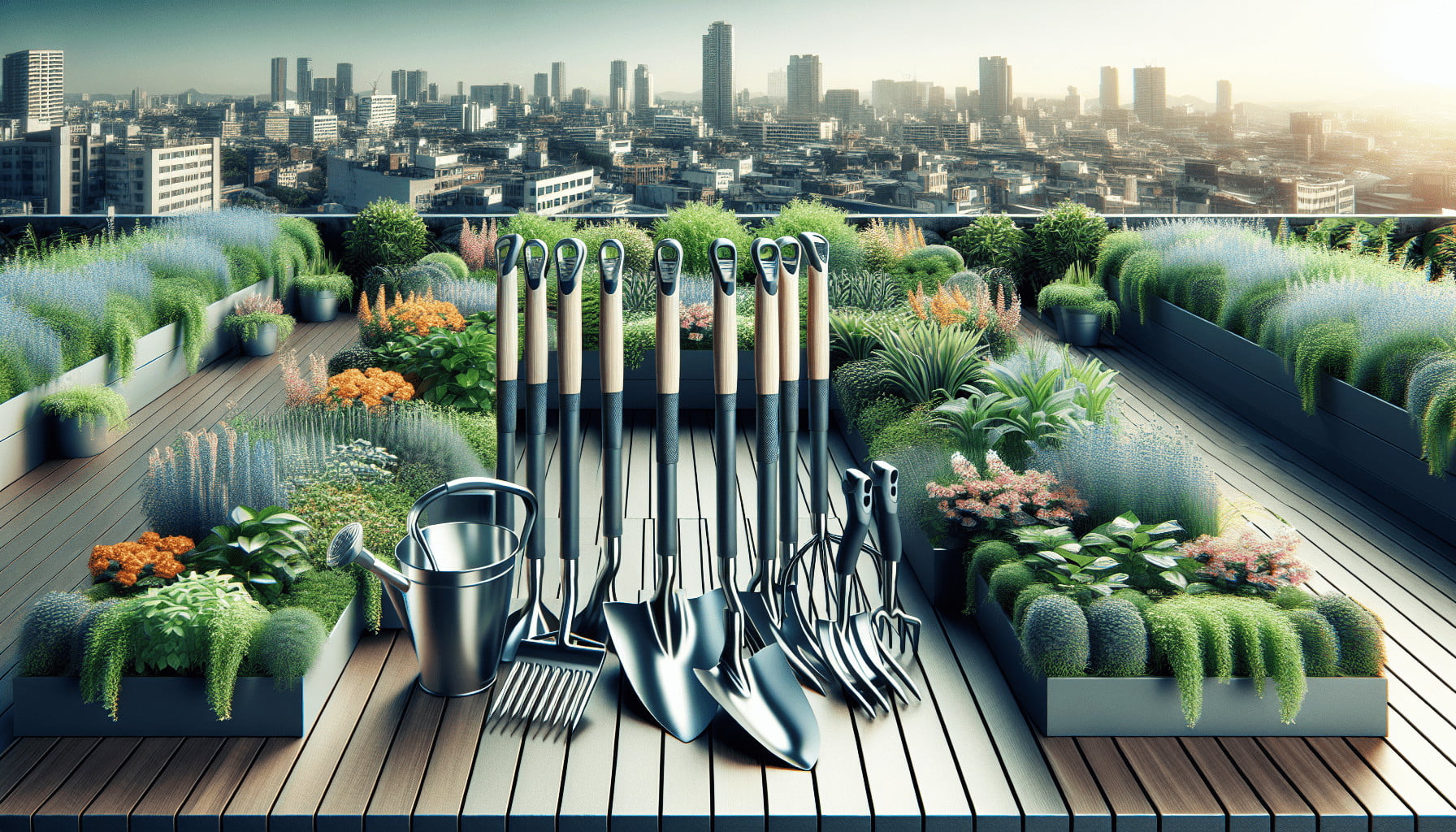Selecting the best lightweight tools for your rooftop gardening adventure can transform your green space into a flourishing oasis. You’ll discover practical tips on choosing the ideal equipment to ensure ease of use, efficiency, and comfort. With a focus on quality and functionality, this guide will help you make informed decisions to cultivate your rooftop garden with confidence and joy.
Rooftop gardening is increasingly popular due to its numerous benefits such as improved air quality, energy conservation, and, of course, the satisfaction of growing your own plants. However, working on elevated surfaces presents its own set of challenges – and finding the right tools is crucial to making your rooftop garden thrive.

Why Lightweight Tools Matter in Rooftop Gardening
When you think about rooftop gardening, one of the first things that may come to mind is the weight constraint. Every building has a specific weight limit, and adding a garden only increases that load. Lightweight tools are indispensable in this situation not only because they minimize the additional weight but also because they make gardening activities easier to handle on an elevated, often confined space.
Safety and Ease of Use
Heavy tools can be cumbersome and difficult to manage on a rooftop. This not only poses a safety risk but also can make the gardening experience less enjoyable. Lightweight tools, in contrast, are easier to handle and maneuver, minimizing the risk of accidents and making gardening a more enjoyable activity.
Lower Physical Strain
Gardening is a physical activity that involves a lot of bending, lifting, and moving. Using lightweight tools reduces the strain on your body, making it easier to spend more time tending to your plants without getting exhausted.
Versatility
Lightweight tools are often more versatile than their heavier counterparts. Many of them are designed to serve multiple functions, which can save you space and money. Plus, they are easier to store and transport, a crucial factor when working in the confined spaces typical of rooftop gardens.
Essential Lightweight Tools for Rooftop Gardening
Let’s delve into the specific types of lightweight tools that are indispensable for any rooftop garden. Below, we outline some key options, explaining why each tool is essential and what to look for when making a purchase.
Hand Trowels
A hand trowel is a versatile garden tool that you’ll likely use every day. Whether you’re planting seeds, transplanting seedlings, or digging small holes, a good hand trowel is invaluable.
What to Look For:
- Material: Opt for aluminum or plastic. Both materials are lightweight and strong.
- Grip: A comfortable, ergonomic handle makes a huge difference, especially for extended use.
- Size: Choose a trowel with a blade that is wide enough to dig effectively but small enough to be precise.
Pruners
Pruners, or pruning shears, are essential for keeping your plants healthy and your garden looking neat. They are used for cutting stems, shaping plants, and removing dead growth.
What to Look For:
- Weight: Make sure they are light enough to handle easily.
- Blade Material: Stainless steel or titanium blades are both lightweight and durable.
- Safety Features: Look for pruners with a safety lock to prevent accidental cutting.
Garden Forks
Garden forks are used for loosening soil, turning compost, and aerating garden beds. A good garden fork can make these tasks much easier.
What to Look For:
- Material: Look for forks made of lightweight metal like aluminum.
- Handle: An ergonomic handle will reduce strain and improve grip.
- Tines: Make sure the tines are sturdy but not too thick.
Watering Cans
Watering cans are an important part of any gardener’s toolkit. They allow for precise watering, making sure that your plants get just the right amount of moisture.
What to Look For:
- Capacity: Choose a can that holds enough water for your needs but is still light enough to carry easily.
- Material: Plastic or lightweight metal are good choices.
- Spout Type: A long spout helps you reach plants in difficult spots.
Transplanters
A transplanter is similar to a trowel but longer and narrower. It’s used for transplanting seedlings and small plants.
What to Look For:
- Depth Gauge: Some transplanters come with measurements on the blade, which can be very useful.
- Construction: Aluminum or plastic handles are perfect as they are both lightweight and durable.
- Grip: Ensure the handle is comfortable and allows for a firm grip.
Rakes
Even in a small garden, a rake can be a valuable tool for clearing debris and keeping your garden beds tidy.
What to Look For:
- Material: Opt for plastic or aluminum tines.
- Size: Choose a compact, handheld rake for easy use in confined spaces.
- Adjustability: Some rakes have adjustable heads for different tasks.
Tool Set
Finally, a good toolset can be an excellent investment. Many garden tool sets come with a variety of essentials, neatly packaged for easy storage and convenience.
What to Look For:
- Variety: Ensure the set includes all the tools you need.
- Storage: A set with a tote or case can make organization and transportation easier.
- Quality: Don’t compromise on quality for the sake of quantity.
Comparison Table for Lightweight Gardening Tools
To help you select the best lightweight gardening tools for your rooftop garden, here’s a comparison table summarizing key points.
| Tool | Best Material | Essential Features | Why It Matters |
|---|---|---|---|
| Hand Trowel | Aluminum/Plastic | Ergonomic handle, precise size | Versatile for daily use |
| Pruners | Stainless Steel | Safety lock, lightweight | Keeps plants healthy and garden neat |
| Garden Fork | Aluminum | Ergonomic handle, sturdy tines | Eases soil loosening and compost turning |
| Watering Can | Plastic/Light Metal | Optimal capacity, long spout | Ensures plants get adequate water |
| Transplanter | Aluminum/Plastic | Depth gauge, ergonomic grip | Facilitates transplantation of seedlings and plants |
| Rake | Plastic/Aluminum | Compact size, adjustable head | Keeps garden beds tidy |
| Tool Set | Mixed | Variety of essentials, storage case | Comprehensive solution for all gardening needs |
How to Maintain Your Lightweight Tools
Just like any other equipment, your lightweight garden tools will need maintenance to ensure they serve you well for a long time. Proper maintenance can also keep your tools safe and efficient, saving you money in the long run.
Regular Cleaning
After each use, make sure to clean your tools. Dirt and moisture can cause rust and wear on the blades and handles. Rinse them off with water and dry them thoroughly.
Sharpening
Tools with blades, like pruners and trowels, need to remain sharp to be effective. Use a sharpening stone or a specialized tool sharpener to maintain the edges.
Lubrication
Moving parts, such as the hinges on pruners, should be lubricated regularly to keep them working smoothly. A light machine oil works well for this purpose.
Storage
Store your tools in a dry, cool place. If you’re using them frequently, consider investing in a storage rack or tool bag. This keeps them organized and easy to access.

Environmental Impact and Sustainability
In today’s world, it’s important to consider the environmental impact of the products you use. Selecting eco-friendly gardening tools can contribute to a more sustainable gardening practice.
Material Selection
Opt for tools that use recycled or sustainable materials. For example, some companies offer products made from recycled plastics or sustainably sourced metals.
Longevity
Choose durable tools that will last a long time. Well-made tools are an investment that can reduce waste and save you money in the long run.
Manufacturer Practices
Consider the practices of the companies you buy from. Look for brands that prioritize environmental stewardship, whether through sustainable manufacturing practices or corporate responsibility programs.
Expert Tips for Rooftop Gardening
Now that you’re familiar with the essential tools and how to maintain them, let’s go over some expert tips to make your rooftop garden a thriving oasis.
Soil and Compost
Rooftop gardens generally require a lightweight soil mix. Opt for a potting mix that is specifically formulated for containers, as it is lighter and better draining than regular garden soil. Adding compost can improve soil fertility and structure.
Container Selection
Choose containers that are lightweight yet durable. Plastic and fabric pots are often your best bet, but make sure they have adequate drainage holes to prevent waterlogging.
Plant Selection
Pick plants that are suited to the rooftop environment. Consider factors like wind exposure, temperature fluctuations, and the amount of sunlight. Succulents, herbs, and certain vegetables like cherry tomatoes and peppers are excellent choices.
Watering Systems
Implementing an efficient watering system can be a game-changer. Drip irrigation or self-watering containers can save you time and ensure your plants get the consistent moisture they need.
Wind Protection
Rooftops can be windy, so providing some form of windbreak is essential. This could be as simple as placing taller plants around the periphery of your garden or setting up a lightweight trellis.
Seasonal Adjustments
Be prepared to make seasonal adjustments. This might mean moving pots to more sheltered areas, changing your watering schedule, or even switching out plants.
Frequently Asked Questions About Rooftop Gardening Tools
To wrap things up, let’s address some common questions about selecting and using lightweight tools for rooftop gardening.
What is the best way to store lightweight garden tools?
Store them in a cool, dry place. Using a storage rack or tool bag can keep them organized and easy to access. Make sure they are clean before storing to prevent rust and wear.
How often should I clean my garden tools?
After every use is ideal, but at least once a week is a good practice. Clean off any dirt and dry them thoroughly to avoid rust and decay.
Are plastic garden tools as durable as metal ones?
It depends on the quality of the plastic. Higher-end plastic tools can be quite durable, but they generally don’t have the longevity of metal tools. That said, they are much lighter and easier to handle.
Can I use heavy-duty tools for my rooftop garden?
While you can, it is not recommended due to the weight constraints and limited space. Lightweight tools are more practical and safer for rooftop gardening.
How do I choose the right size tools for my garden?
Consider the size of your garden and your own comfort. Smaller, more compact tools are generally easier to use in confined spaces. Look for tools that are ergonomic to reduce physical strain.
Is it worth investing in high-quality garden tools?
Absolutely. High-quality tools are more durable, efficient, and generally more comfortable to use. They are an investment that pays off in the long term, both in terms of performance and lifespan.
Conclusion
Selecting the best lightweight tools for your rooftop garden can make all the difference in your gardening experience. From hand trowels to watering cans, each tool has its own role to play. By understanding what to look for and how to maintain your tools, you’ll be well-equipped to create a flourishing rooftop garden. Remember, choosing lightweight and durable tools not only makes your gardening easier but also ensures the safety and health of your rooftop oasis. Happy gardening!
